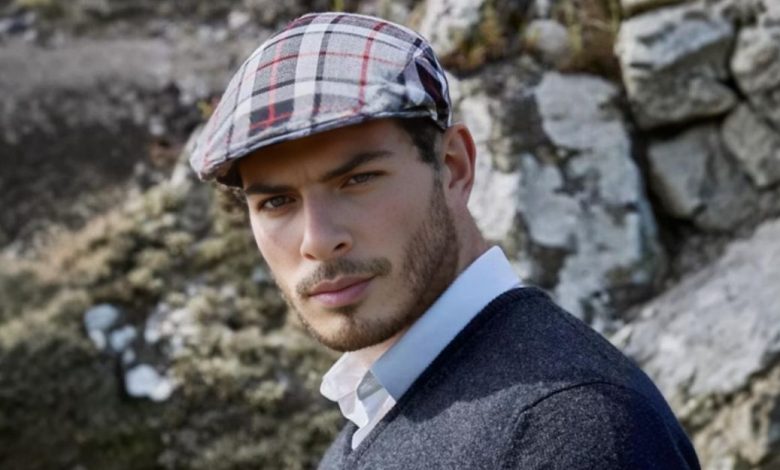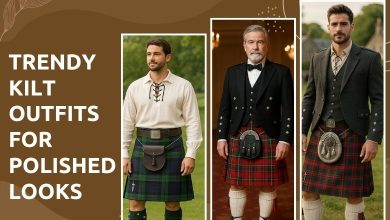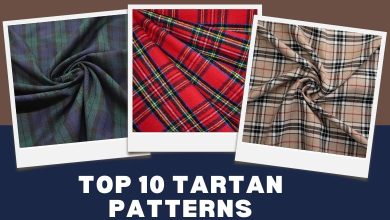Scottish Hats & Caps | A Complete Guide

When the discussion is about fashion, European culture is way further away as compared to other cultures. However, when it comes to Scottish fashion their fashion is more attractive as compared to others. Flat-topped Scottish hats, different from fedora hats offer a simpler expression that commends various outfits. They are woolen caps with a flat top, originating from Scotland and brought to America in the 1700s. These hats were worn by America’s earliest settlers. This blog is all about the importance of a flat cap, its history, and how to wear one.
Before we move forward, let’s understand what these flat-topped Scottish hats are. These traditional hats are a type of cap with a soft fabric and a short, rounded front brim.
There are two main types according to the shape of these hats, both of which can be called a flat cap. The first type has a flat, smooth look because the top of the cap is made from a single piece of fabric.
The material of the cap is pulled forward over the brim, and it is either stitched or attached to the top edge to create a triangular side profile.
History of Scottish Flat-Topped Hat
Scottish culture has a rich history in fashion, particularly in headwear. One of the most popular types of headwear in Scotland, Ireland, and Britain is the Scottish hat. Traditionally made from black wool felt, it is often worn with a tartan or tweed suit.
It must be noted that this hat was initially made for a military headdress and has long been linked with the Scottish troops of the British Army. Moreover, this traditional hat was also worn by some of the earliest residents in North America.
From the 15th to 19th centuries, the cap was worn with the ancient style of headgear in Scotland. During the 16th century, this cap became fashionable as part of Scottish national dress.
Additionally, the cap was also often worn for formal events like weddings and funerals and was typically made of black wool felt with a stiffened crown. kilts for gents
Reason for Creating Flat Scottish Hats
The purpose of these traditional Scottish flat hats was to provide both protection and functionality. The main thing that was noticed, they were designed to offer warmth during harsh winter months and shield Scottish soldiers during battle.
If we talk about the last sixteenth century these designed woolen hats were originally made of leather or tartan fabric and mostly used by Scottish soldiers. However, the iconic Scottish military headwear has advanced to provide various tastes and styles.
On the other side, the kiltie is a popular choice among Scots, worn for centuries by members of Scottish clans, upper class, and even those of different occupations or social status. Meanwhile, these hats serve as a timeless reminder of Scotland’s rich heritage and offer an opportunity to showcase the proud legacy of one’s clan through tartan accessories.
Another popularity of this hat is that Burglars, muggers, or robbers are often shown wearing a black leather flat cap, patched-up sports coat or leather jacket, dark clothing, and sometimes a domino mask in popular culture. This imagery inspired the comic book character, the Goon.
Current Popularity of Scottish Flat Hat
The purpose of these traditional Scottish flat hats was to provide both protection and functionality. The main thing that was noticed, they were designed to offer warmth during harsh winter months and shield Scottish soldiers during battle.
If we talk about the last sixteenth century these designed woolen hats were originally made of leather or tartan fabric and mostly used by Scottish soldiers. However, the iconic Scottish military headwear has advanced to provide various tastes and styles.
Different Types
Different types of hats are commonly used. The most traditional type of the flat cap is the Balmoral which is a high crowned hat topped with toorie. These are the traditional Scottish caps that are worn as a part of formal dresses. It is made from thick wool with a solid border.
This traditional trend of flat hats continues with another type of Scottish hat the Glengarry. This hat was originally designed with a notched crown and has a floppy brim. It is generally worn as part of Scottish military or civilian Highland attire, either formal or informal, as an alternative to the Balmoral cap or beret.
It is important to remember that both Balmoral and Glengarry carry the weight of Scottish military tradition and history with them. Although most Scottish hats also originated from military use however some carry a different spirit nowadays.
The most exciting thing is that both traditional hats Balmoral and Glengarry can simply worn at any time and are often worn in many informal gatherings. Now in the current era, their appearance is more formal than ideal for everyday use or casual outings.
The most exciting thing is both traditional hats Balmoral and Glengarry can simply worn at any time and are commonly worn in many informal gatherings. Now in the current era, their appearance is more formal than ideal for everyday use or casual outings.
Tam o’ Shanter
Another type of Scottish hat is bold, colorful, and special which is known as Tam o’ Shanter and has a good history as indicated by this tartan cap. This huge type of hat is another development of the Balmoral and the Glengarry.
While there is not so much difference the traditional hat has also been used for military purposes but is similarly known for an academic version and fashion apparel.
A tartan fabric completes the Scottish Tam look with its smaller hatband and large toorie. The Tam is more commonly worn by women than other traditional Scottish caps and is a popular fashion accessory.
This blog provides a brief introduction to flat-topped Scottish hats. Following that, information about the history, popularity, and application of these hats was provided. Three different types of the hats but most attractive hat is Tam o’ Shanter which is different from other two types Balmoral and Glengarry.The hat was originally worn by the Scottish people but now it has become common in groups such as American folk dancers.




